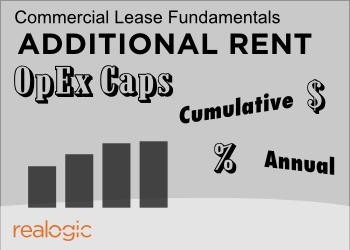 After reading last week’s blog post about digging into operating expenses, it may appear that a landlord has free reign to pass along every expense they incur in the operation and management of a building. The truth is though that there are several conventions within commercial real estate leases that control the expenditures being passed back to the tenant.
After reading last week’s blog post about digging into operating expenses, it may appear that a landlord has free reign to pass along every expense they incur in the operation and management of a building. The truth is though that there are several conventions within commercial real estate leases that control the expenditures being passed back to the tenant.
Caps on Operating Expenses
Rather than excluding a particular component of operating expenses, as described in the previous section, it may be decided to limit the increases in one of three ways
- On a specific item
- On the expenses as a whole
- On a portion (or pool) of the expenses
By requesting a cap on operating expense increases in negotiation, a tenant can more easily predict the cost of the lease over the term. They will have the confidence of knowing they won’t be placed in a precarious financial situation if operating expenses sharply rise beyond the normal increase rate.
Caps on increases are either cumulative or annual. A cumulative cap compounds from year-to-year and usually, if the increase in one year does not meet the stated cap, the variance between the actual and the cap can be “saved” and applied to the following year.
For example, if the cap is 5% and for a year the increase is only 4%, the increase for the following year can be as much as 6% without violating the cap language in the lease. An annual increase is one which resets each year. Using the prior example, the 2ndyear increase cannot go up to 6%, but must remain at 5%.
The most important thing to know is how to identify whether or not a cap is cumulative or annual in the lease language.
So, I’ll keep this one short in the interest of posting the fundamentals today. Next week will be a long one though as I tackle a full article all about Gross Ups.